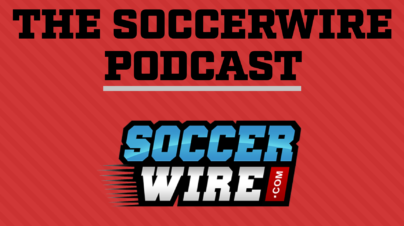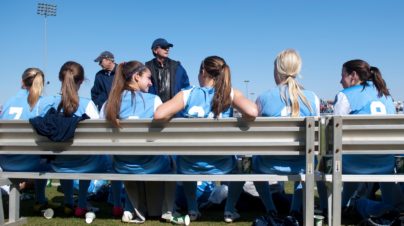Boehm: How the USWNT overplayed their hand in the pay-equity court case

By Charles Boehm
SoccerWire Analyst
Friday brought big news of a key legal setback for the U.S. Women’s National Team in their equal-pay battle with the U.S. Soccer Federation. U.S. District Court Judge Gary Klausner’s summary judgement was a stunning and dispiriting development for the USWNT’s legions of fans and well-wishers.
Given how ugly and contentious this whole affair has become, it’s only a victory for the federation in the narrowest possible sense, as they continue to look bad in the public eye by antagonizing their most successful and beloved team.
[+READ: Judge dismisses equal pay portion of U.S. Women’s National Team lawsuit]
Need proof? Witness former Vice President and presumptive 2020 Democratic presidential nominee Joe Biden wading into the conversation within hours of the ruling’s release:
To @USWNT: don’t give up this fight. This is not over yet.
To @USSoccer: equal pay, now. Or else when I'm president, you can go elsewhere for World Cup funding. https://t.co/XK6t9oM94k
— Joe Biden (@JoeBiden) May 2, 2020
Yet while the full extent of Klausner’s agreement with the fed was striking to many, the core tenets of his decision were not a huge surprise to those who’ve been closely following the case.
The court of public opinion and the courts of law are two significantly different places, with different rules, power dynamics and so on. This was always going to be a tough fight for the USWNT to win in the latter, as dominant as they were in their campaign to win the former.
[+READ: U.S. Soccer’s Ruthless Approach Against USWNT in Equal Pay Lawsuit Paid Off—For Now]
A big part of that is because the different pay arrangements between the MNT and WNT were enshrined by collective bargaining agreements that the players themselves negotiated over and signed off on. The two teams’ respective CBAs are different because men’s and women’s professional soccer are different.
The men – like most of their counterparts around the world – get most of their money from their day-to-day employers, their club teams, and so are paid for their international service over and above that by a pay-for-play arrangement with the federation, kind of like how many of us collect extra money from side hustles in addition to our full-time jobs.
The WNT, meanwhile, long ago negotiated something closer to a full-time contract agreement with USSF, because women’s club soccer is far less lucrative and far more unstable than men’s. The NWSL is the third attempt at a women’s pro league in the US and even after surviving far longer than its predecessors the WUSA and WPS, it still pays extremely modest salaries, from minimum-wage equivalent contracts at the bottom end of the scale to high-end deals that rarely top six figures in annual compensation.
Let me offer some explanation as to how the judge arrived at his decision to deny the USWNT's wage discrimination claim and what the players will likely need to show about their evidence on appeal to get the decision reversed
— Steven Bank (@ProfBank) May 2, 2020
Wisely and understandably, the USWNT have for many years sought more stability in their arrangement with the fed, prioritizing base pay over bonuses and bargaining for healthcare, childcare and maternity leave benefits – stuff that the men don’t really even have to think about, since the federation is not their primary employer.
Further, the four-time world champions seem to have lost the framing battle to U.S. Soccer, in the sense that the comparisons between the MNT and WNT compensation placed in front of Judge Klausner were based on the past several years – a period in which the women enjoyed unparalleled world dominance, whereas the men suffered a woeful slump, failing to qualify for the 2018 World Cup (hugely costly in financial terms alone) and drifting down the FIFA World Rankings.
So the women played more and made more during that time, driving up their average per-game pay to a figure slightly greater than the men during the same time. If you’d taken a similar snapshot of almost any other period in American soccer history, the comparison would look quite different. So you could contend that the USMNT playing mostly poorly since 2016 or so has turned out to be the federation’s saving grace in this court case.
All that said, the judge might not have been sympathetic even if the numbers were framed differently. The big-picture goals the USWNT are pursuing – true equality of pay and treatment between the men’s and women’s national team programs in every applicable context – reflect a wider desire among a large segment of American society to close the gap between what men and women are paid, and how they are treated, in the workplace. To many, especially among the team’s supporters, that’s a clear and urgent goal that carries powerful moral weight.
Even if it seems like an obviously worthy cause, others see it as revolutionary – and when ideas like that enter the marble halls of the judicial system, they’d better be airtight.
American jurisprudence is generally a reflexively conservative place, where legal precedent is revered and it takes very persuasive arguments to displace the status quo. This was the case even before the Federalist Society led the Republican Party’s long-running and highly successful effort to “pack the courts” at federal level with right-of-center judges.
George W. Bush appointed this judge, so I guess if you are the USWNT and had your choice, you'd go with the judge who was not appointed by George W. Bush.
— Caitlin Murray (@caitlinmurr) May 2, 2020
I’m not going to argue here about whether the judiciary’s current makeup is inherently a good or a bad thing, nor am I suggesting that a group of women seeking change on the level the USWNT are battling for could never get a fair hearing from someone who looks and thinks differently than they do. But the players and their attorneys needed to factor all this into their strategy for this case.
As UCLA law professor Steven Bank discussed with me on a recent episode of the SoccerWire Podcast, there were – and still are – real risks for both sides should this case go all the way through the courts to a final judgement. The USWNT could have their whole cause shot down. The fed could get hit with a multi-million-dollar payout. Both sides would seem to have real reasons to seek a negotiated settlement to head off that up-or-down verdict.
The players have clearly won the battle for public opinion. Their case even led to the resignation of former USSF president Carlos Cordeiro after the fed’s gender-based lines of legal attack on the WNT sparked outcry among fans and corporate sponsors alike earlier this year.
Yet they were unable or unwilling to leverage that into a settlement that could’ve dramatically advanced their goals even if compromises of some sort were required. In fact, we’ve heard precious little about talks of any kind between the two sides, even as Cordeiro’s replacement, former USWNT star Cindy Parlow Cone, publicly asserted her desire to settle.
It appears that a compromise could still materialize – both parties still have significant motives to get a deal done and move on from this carnage. But with Friday’s ruling the USWNT have lost a huge amount of the leverage they had built over the past four years, and probably won’t ever get to negotiate from such a position of strength again.
Public support and sympathy has its limits when you’re standing in front of a judge. It was a big gamble by both sides to let this case reach that point – a gamble that the WNT lost.
SOCCERWIRE MARKETPLACE
- The St. James FC Travel Staff Coach - North (Loudoun) & South (Fairfax)
- The St. James FC Girls Academy (GA) Head Coach - 2 teams
- The St James FC Boys Travel Tryouts
- OFFICIAL BAYERN MUNICH SUMMER CAMPS U.S.
- JOIN THE ALLIANCE!
- OFFICIAL FC BARCELONA CAMPS U.S.
- The Cup San Diego - Hosted by Legends FC
- Players Wanted - Undergraduate or Post-graduate
- Head Coach - South Region at The St. James FC
- Travel Coach - North Region at The St. James FC















